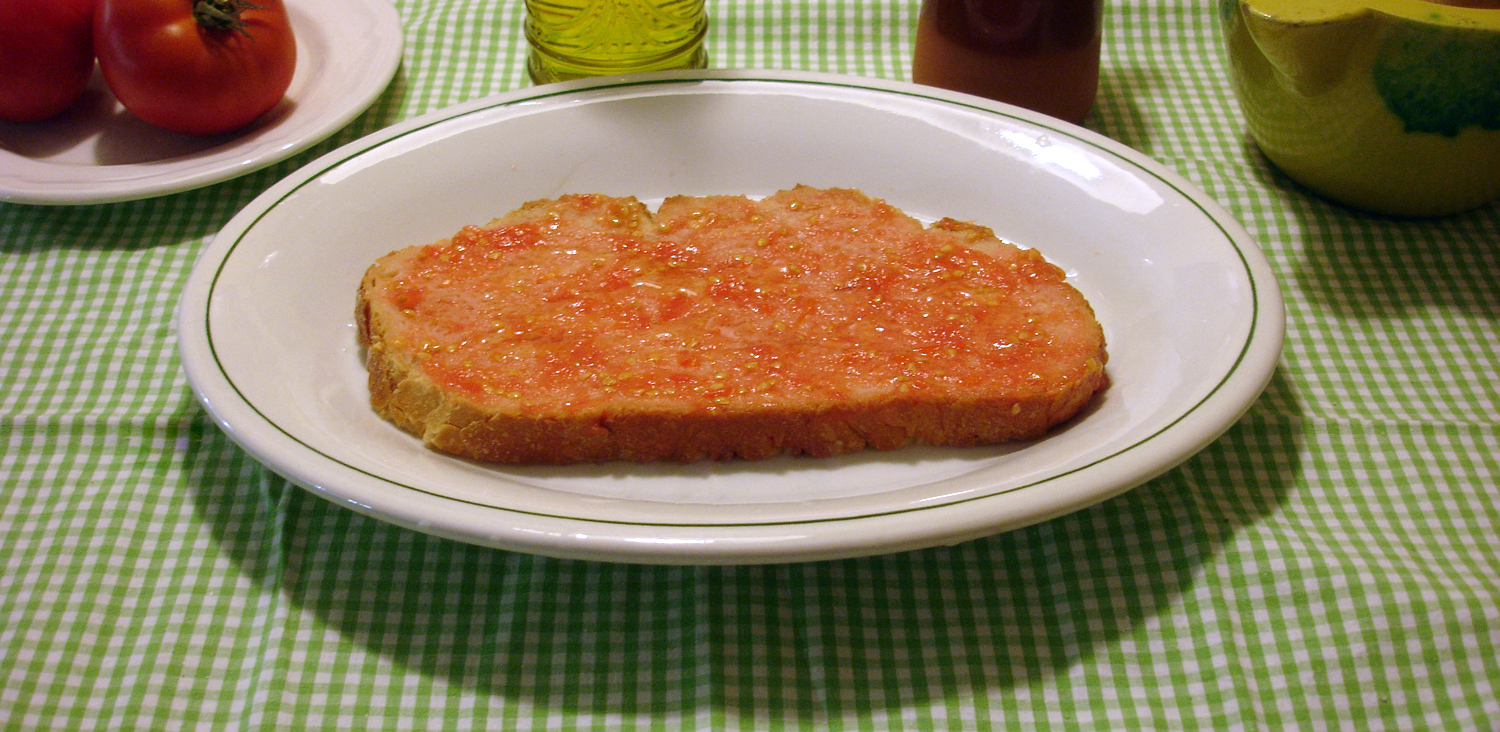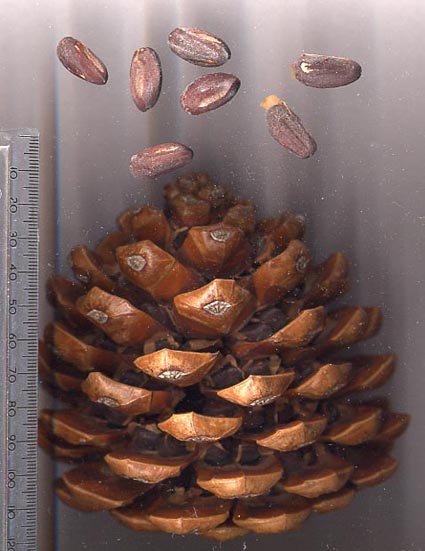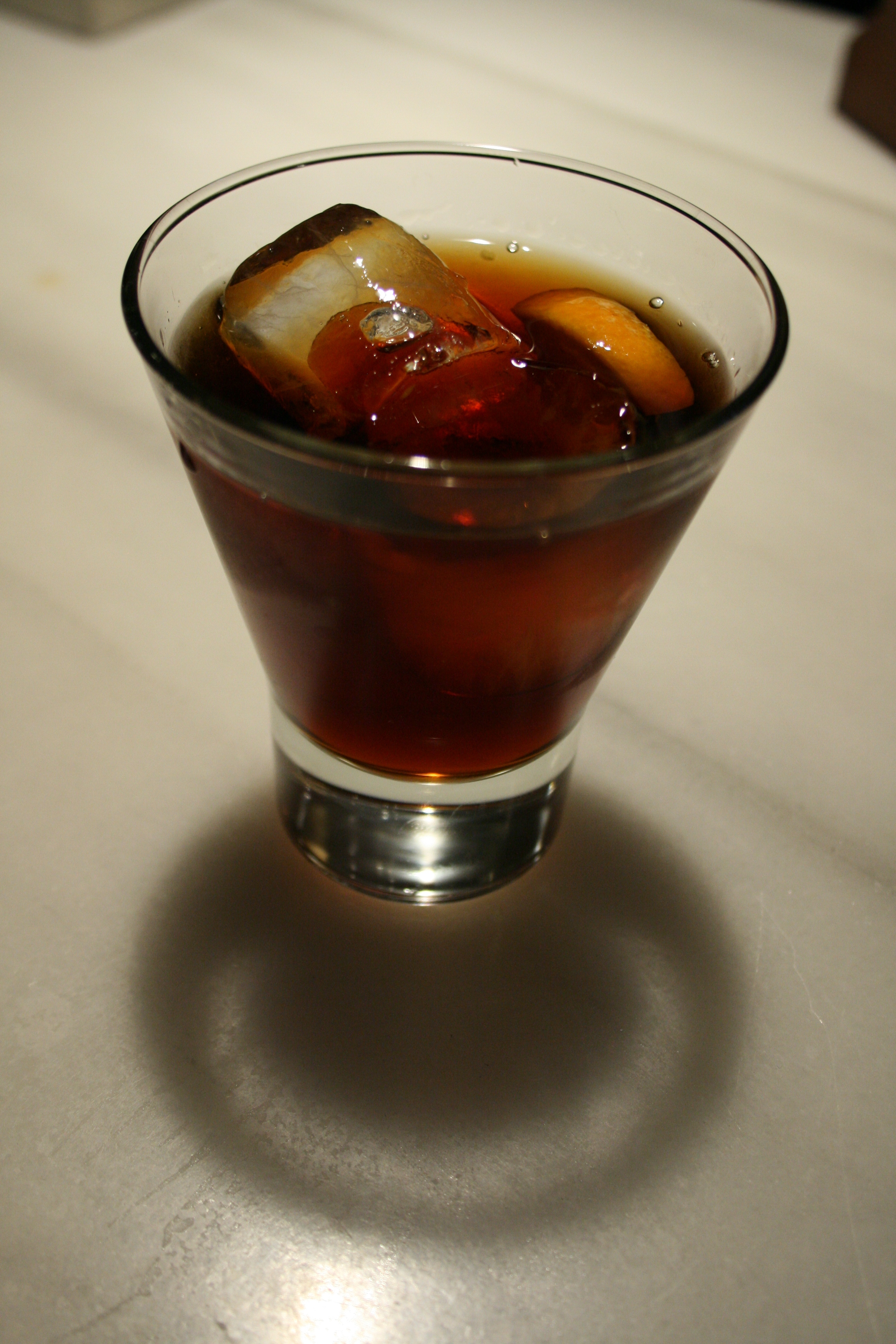|
Panellet
Panellets (, singular: ''panellet''; Catalan for "little bread") are the traditional dessert of the All Saints' Day, known as Castanyada, in Catalonia, Andorra, Ibiza and the Land of Valencia, with chestnuts and sweet potatoes. Panellets are often accompanied with a sweet wine, usually ''moscatell'', ''mistela'', ''vi de missa'' or ''vi ranci''. Panellets are small cakes or cookies in different shapes, mostly round, made mainly of marzipan (a paste made of almonds and sugar). The most popular are the panellets covered with pine nuts, consisting of the panellet basis (marzipan) rolled in pine nuts and varnished with egg. In Sevilla, in southern Spain, these cookies are known as ''empiñonados''. Panellets date at least from the 18th century, when they were used as blessed food to share after some religious celebrations (Panellets de Sant Marc and Panellets de la Santa Creu)." Within the EU and UK, panellets have Traditional Speciality Guaranteed status. [...More Info...] [...Related Items...] OR: [Wikipedia] [Google] [Baidu] |
Pignoli (cookie)
Pignolo (; plural pignoli) are a type of cookie from Italian cuisine. Considered a standard of Italian confectionery, they are a common item at Italian bakeries. It is a popular cookie in all of southern Italy, and in Sicilian communities in the United States. The cookie is a light golden color and studded with golden pine nuts (also called ''pignoli''). Made with almond paste and egg whites, the cookie is moist, soft and chewy beneath the pine nuts. Often they are formed into crescents; otherwise the cookies are round. Pignoli are a popular Italian holiday treat, especially at Christmas. Because both almond paste and pine nuts are relatively expensive, and this cookie uses substantial amounts of both, this cookie is a luxury food. Being essentially an almond macaroon, this cookie belongs to a type known as "amaretto". See also *Amaretto (other) *Panellets Panellets (, singular: ''panellet''; Catalan for "little bread") are the traditional dessert of the All Saint ... [...More Info...] [...Related Items...] OR: [Wikipedia] [Google] [Baidu] |
Catalan Cuisine
Catalan cuisine is the cuisine from Catalonia. It may also refer to the shared cuisine of Northern Catalonia and Andorra, the second of which has a similar cuisine to that of the neighbouring Alt Urgell and Cerdanya ''comarques'' and which is often referred to as "Catalan mountain cuisine". It is considered a part of western Mediterranean cuisine. History There are several Catalan language cookbooks from the Middle Ages that are known to modern scholars. The ' (1520) was one of the most influential cookbooks of Renaissance Spain. It includes several sauce recipes made with ingredients such as ginger, mace powder ('), cinnamon, saffron, cloves ('), wine and honey. '' Salsa de pagó'' took its name from the peacock ( ca, el paó) that it was intended to be served with, but could accompany any type of poultry, and was part of the medieval Christmas meal. ' (or ' as it's called in the '' Cuoco Napoletano'') was half-roasted (') poultry that was finished in a ''salsa'' thicken ... [...More Info...] [...Related Items...] OR: [Wikipedia] [Google] [Baidu] |
Pine Nut
Pine nuts, also called piñón (), pinoli (), pignoli or chilgoza (), are the edible seeds of pines (family Pinaceae, genus ''Pinus''). According to the Food and Agriculture Organization, only 29 species provide edible nuts, while 20 are traded locally or internationally owing to their seed size being large enough to be worth harvesting; in other pines, the seeds are also edible, but are too small to be of notable value as a human food. Species and geographic spread In Asia, two species in particular are widely harvested: Korean pine (''Pinus koraiensis'') in northeast Asia (the most important species in international trade) and chilgoza pine (''Pinus gerardiana'') in the western Himalaya. Four other species, Siberian pine (''Pinus sibirica''), Siberian dwarf pine (''Pinus pumila''), Chinese white pine (''Pinus armandii'') and lacebark pine (''Pinus bungeana''), are also used to a lesser extent. Russia is the largest producer of ''Pinus sibirica'' nuts in the world, followed b ... [...More Info...] [...Related Items...] OR: [Wikipedia] [Google] [Baidu] |
Spain
, image_flag = Bandera de España.svg , image_coat = Escudo de España (mazonado).svg , national_motto = ''Plus ultra'' (Latin)(English: "Further Beyond") , national_anthem = (English: "Royal March") , image_map = , map_caption = , image_map2 = , capital = Madrid , coordinates = , largest_city = Madrid , languages_type = Official language , languages = Spanish language, Spanish , ethnic_groups = , ethnic_groups_year = , ethnic_groups_ref = , religion = , religion_ref = , religion_year = 2020 , demonym = , government_type = Unitary state, Unitary Parliamentary system, parliamentary constitutional monarchy , leader_title1 = Monarchy of Spain, Monarch , leader_name1 = Felipe VI , leader_title2 = Prime Minister of Spain ... [...More Info...] [...Related Items...] OR: [Wikipedia] [Google] [Baidu] |
Land Of Valencia
The Valencian Community ( ca-valencia, Comunitat Valenciana, es, Comunidad Valenciana) is an autonomous community of Spain. It is the fourth most populous Spanish autonomous community after Andalusia, Catalonia and the Community of Madrid with more than five million inhabitants.Instituto Nacional de Estadística, Madrid, 2020. Its homonymous capital Valencia is the third largest city and metropolitan area in Spain. It is located along the Mediterranean coast on the east side of the Iberian Peninsula. It borders with Catalonia to the north, Aragon and Castilla–La Mancha to the west, and Murcia to the south, and the Balearic Islands are to its east. The Valencian Community consists of three provinces which are Castellón, Valencia and Alicante. According to Valencia's Statute of Autonomy, the Valencian people are a ''nationality''. Their origins date back to the 1238 Aragonese conquest of the Taifa of Valencia. The newly-founded Kingdom of Valencia enjoyed its own legal entity ... [...More Info...] [...Related Items...] OR: [Wikipedia] [Google] [Baidu] |
Cookies
A cookie is a baked or cooked snack or dessert that is typically small, flat and sweet. It usually contains flour, sugar, egg, and some type of oil, fat, or butter. It may include other ingredients such as raisins, oats, chocolate chips, nuts, etc. Most English-speaking countries call crunchy cookies biscuits, except for the United States and Canada, where biscuit refers to a type of quick bread. Chewier biscuits are sometimes called ''cookies'' even in the United Kingdom. Some cookies may also be named by their shape, such as date squares or bars. Biscuit or cookie variants include sandwich biscuits, such as custard creams, Jammie Dodgers, Bourbons and Oreos, with marshmallow or jam filling and sometimes dipped in chocolate or another sweet coating. Cookies are often served with beverages such as milk, coffee or tea and sometimes "dunked", an approach which releases more flavour from confections by dissolving the sugars, while also softening their texture. Factory-made ... [...More Info...] [...Related Items...] OR: [Wikipedia] [Google] [Baidu] |
Protected Geographical Status
Three European Union schemes of geographical indications and Traditional food, traditional specialties, known as protected designation of origin (PDO), protected geographical indication (PGI), and traditional specialities guaranteed (TSG), promote and protect names of agricultural products and foodstuffs. Products registered under one of the three schemes may be marked with the logo for that scheme to help identify those products. The schemes are based on the legal framework provided by the EU Regulation No 1151/2012 of the European Parliament and of the Council of 21 November 2012 on quality schemes for agricultural products and foodstuffs. This regulation applies within the EU as well as in Northern Ireland. Protection of the registered products is gradually expanded internationally via bilateral agreements between the EU and non-EU countries. It ensures that only products genuinely originating in that region are allowed to be identified as such in commerce. The legislation fi ... [...More Info...] [...Related Items...] OR: [Wikipedia] [Google] [Baidu] |
Sevilla
Seville (; es, Sevilla, ) is the capital and largest city of the Spain, Spanish autonomous communities of Spain, autonomous community of Andalusia and the province of Seville. It is situated on the lower reaches of the Guadalquivir, River Guadalquivir, in the southwest of the Iberian Peninsula. Seville has a municipal population of about 685,000 , and a List of metropolitan areas in Spain, metropolitan population of about 1.5 million, making it the largest city in Andalusia, the List of metropolitan areas in Spain, fourth-largest city in Spain and the Largest cities of the European Union by population within city limits, 26th most populous municipality in the European Union. Its old town, with an area of , contains three UNESCO World Heritage Sites: the Alcázar of Seville, Alcázar palace complex, the Seville Cathedral, Cathedral and the Archivo General de Indias, General Archive of the Indies. The Seville harbour, located about from the Atlantic Ocean, is the only rive ... [...More Info...] [...Related Items...] OR: [Wikipedia] [Google] [Baidu] |
Marzipan
Marzipan is a confectionery, confection consisting primarily of sugar, honey, and almond meal (ground almonds), sometimes augmented with almond oil or extract. It is often made into Confectionery, sweets; common uses are chocolate-covered marzipan and small marzipan imitations of fruits and vegetables. It can also be used in biscuits or rolled into thin sheets and glazed for icing cakes, primarily birthday cakes, wedding cakes and Christmas cakes. Almond paste, Marzipan paste may also be used as a baking ingredient, as in stollen or banket (food), banket. In some countries, it is shaped into small figures of animals as a traditional treat for New Year's Day or Christmas. Marzipan is also used in Tortell, and in some versions of king cake eaten during the Carnival season. Around the world Europe The Geographical indications and traditional specialities in the European Union recognize two marzipans in Europe. One in Toledo (Spain) and another one in Lübeck (Germany). So ... [...More Info...] [...Related Items...] OR: [Wikipedia] [Google] [Baidu] |
Sweet Wine
Dessert wines, sometimes called pudding wines in the United Kingdom, are sweet wines typically served with dessert. There is no simple definition of a dessert wine. In the UK, a dessert wine is considered to be any sweet wine drunk with a meal, as opposed to the white fortified wines ( fino and amontillado sherry) drunk before the meal and the red fortified wines (port and madeira) drunk after it. Thus, most fortified wines are regarded as distinct from dessert wines, but some of the less-strong fortified white wines, such as Pedro Ximénez sherry and Muscat de Beaumes-de-Venise, are regarded as honorary dessert wines. In the United States, by contrast, a dessert wine is legally defined as any wine over 14% alcohol by volume, which includes all fortified wines—and is taxed more highly as a result. This dates back to when the US wine industry only made dessert wines by fortification, but such a classification is outdated now that modern yeast and viticulture can produce dry wi ... [...More Info...] [...Related Items...] OR: [Wikipedia] [Google] [Baidu] |
Sweet Potato
The sweet potato or sweetpotato (''Ipomoea batatas'') is a dicotyledonous plant that belongs to the Convolvulus, bindweed or morning glory family (biology), family, Convolvulaceae. Its large, starchy, sweet-tasting tuberous roots are used as a root vegetable. The young shoots and leaves are sometimes eaten as Leaf vegetable, greens. Sweet potato cultivars, Cultivars of the sweet potato have been bred to bear tubers with flesh and skin of various colors. Sweet potato is only distantly related to the common potato (''Solanum tuberosum''), both being in the order Solanales. Although darker sweet potatoes are often referred to as "yams" in parts of North America, the species is not a yam (vegetable), true yam, which are monocots in the order Dioscoreales. Sweet potato is native to the tropical regions of the Americas. Of the approximately 50 Convolvulaceae#Genera, genera and more than 1,000 species of Convolvulaceae, ''I. batatas'' is the only crop plant of major importance—some o ... [...More Info...] [...Related Items...] OR: [Wikipedia] [Google] [Baidu] |
Chestnut
The chestnuts are the deciduous trees and shrubs in the genus ''Castanea'', in the beech family Fagaceae. They are native to temperate regions of the Northern Hemisphere. The name also refers to the edible nuts they produce. The unrelated horse chestnuts (genus ''Aesculus'') are not true chestnuts, but are named for producing nuts of similar appearance that are mildly poisonous to humans. True chestnuts should also not be confused with water chestnuts, which are tubers of an aquatic herbaceous plant in the sedge family Cyperaceae. Other species commonly mistaken for chestnut trees are the chestnut oak ('' Quercus prinus'') and the American beech (''Fagus grandifolia''),Chestnut Tree in chestnuttree.net. both of which are also in the Fagaceae family. |






.jpg)
